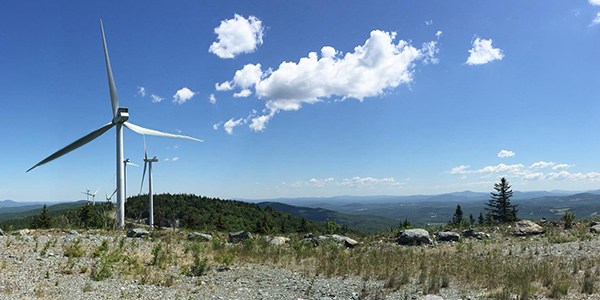The Vermont Climate Council has begun the thorny work of aligning the state’s existing Comprehensive Energy Plan with a new Climate Action Plan that is due at the end of the year.
The plans will “move in parallel” and are “intended ultimately to intersect so that they are consistent with each other and they inform each other,” Vermont Department of Public Service Commissioner and Climate Council member June Tierney said at the latest council meeting March 22.
For decades, Vermont’s energy plan has been based on the principles of least-cost resource planning, which Tierney said considers greenhouse gases and the use of an environmentally sound energy supply.
“Before the Climate Council was founded, [the energy plan] was principally the place where the state dealt with addressing climate change in the energy sector,” she said. The last energy plan was completed in 2016.
Passage of the Global Warming Solutions Act last year established the council and gave it the task of developing Vermont’s first climate plan. The act also altered the statute governing the energy plan to mandate that it is consistent with the climate plan and the new law’s GHG requirements.
The DPS and the council must now decide how to coordinate their respective plans. A major overlapping area between the two is GHG reduction requirements, according to TJ Poor, DPS director of efficiency and energy resources. They also will both provide an energy sector analysis for policy and technology scenarios, ensure stakeholder engagement and consider issues on equity, he said.
Some DPS staff in charge of the energy plan also are council members, and Tierney said aligning their work is a challenge.
“We are struggling a little at the department to maintain clarity about the need for us to achieve the mission that we have been given as the chief planning competency in the state on energy issues, as we also participate in the council’s work that clearly informs if not shapes a lot of what we are now doing,” she said.
Recognizing the significant role the DPS has in helping the council achieve its goals, Tierney has allocated about half of the department’s resources to the council. But she said the department must be responsible for completing the energy plan on time.
With the climate plan due in December, and the next energy plan due in January, there is a sense of urgency growing in their development. That urgency is compounded by the fact that the preparation and release schedules for the plans will not line up again until 2033. The council has been active since November, but much of its work to date has focused on building processes and procedures.
“I am concerned about the amount of work that has to be done in the amount of time that we have,” Tierney said. It can be done, she added, if council members can find areas that will allow for compromise, such as foundational data.
“It does not serve anybody for the state to [have] two voices on how we measure greenhouse gases or emissions,” Tierney said. “We need to have some uniformity there.”
While the energy plan will need to model emissions for the energy sector, the climate plan will be responsible for emissions in all non-energy sectors. The low emissions analysis platform that the department is using already for energy sector sources could also support the council’s work, Poor said.
The council expects to issue a draft climate plan for public comment on Oct. 1.



